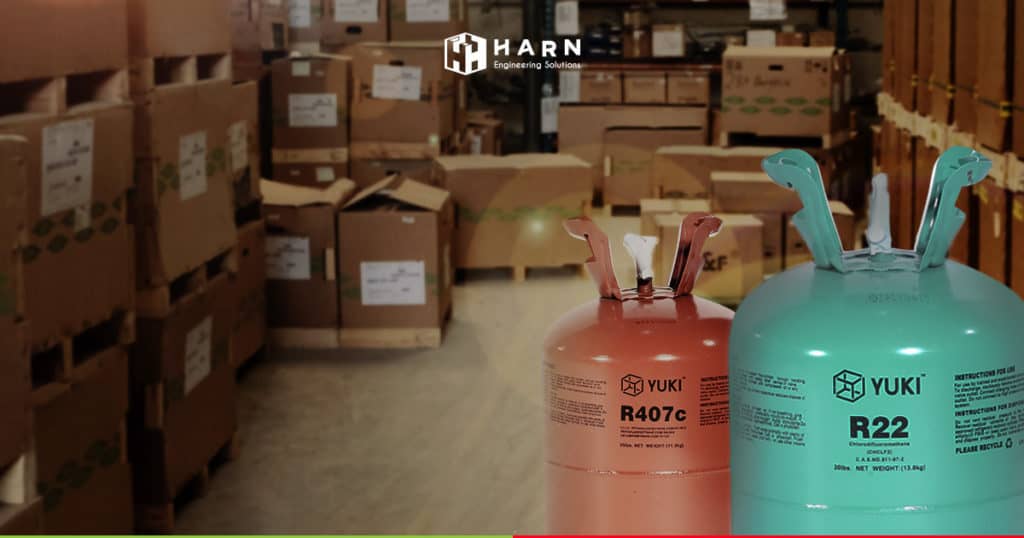
For years, one may have heard about toxic refrigerant in air conditioning that greatly affects the environment and harms to human once inhale. However, the new improved refrigerant is now causing less damage.
Refrigerant is an important element in refrigeration system which is divided into several types in accordance to usage for cooling units. Previously, the refrigerant is durable and is very effective for refrigeration system. However, it is unfriendly to the environment and has a great effect to humans’ health when inhale in case of leakage. Its compound is toxic and causes global warming as well damage the cooling system.
This article will help one understand how to choose refrigerant for air conditioning that would suit the refrigeration system as well as to educate on damage of traditional refrigerant.
Refrigerant and Cooling System
Cooling system creates the cool and removes the heat with the aid of refrigerant which acts as a high efficient substance that generates the cool. Refrigerant passes on refrigeration systems and changes its form from liquid to gas. Because it needs to change its form constantly, it needs to have durability and does not affect other components in condensing unit.
Refrigerant acts as medium that eliminates the heat in the desired areas need to be cool and passes on to cooling system. It starts by controlling refrigerant from pressure reducing valve that spays refrigerant to evaporator in order to pull out heat. Once the refrigerant is boiled and become gas at low pressure, it moves on to compressor to compress air before sending to condenser to get rid of the heat and make the refrigerant become liquid once again. Then, back to expansion valve to reduce pressure and make the refrigerant ready to be used once again.
How refrigerant involves in global warming?
Global warming is caused by the fact that human release gases into atmosphere which obstructs and destroys ozone that protects human from direct sun radiation. Substance called chlorofluorocarbon or CFC or Freon which is man made from industrial plants, equipment and refrigerant.
Global warming causes the Earth temperature to rise were caused by 2 main reasons:
1. Global atmosphere or ozone is destroyed by short radiation such as UV from sunlight that penetrates the Earth’s surface directly.
2. Increase of Greenhouse gas that covers the Earth surface until the release of long wave radiation cannot escape from the atmosphere resulting in an increase in Earth temperature.
Many types of refrigerant are one of the causes of greenhouse gas effect which can be determined as follow:
1. Ozone Depletion Potential (ODP) is a number of level of ozone damage in Stratosphere. It is caused by many types of refrigerant which can be measured by R-11 as a standard. Synthetic chemical in Halocarbon that contains Chlorine or Bromine as compound, once separated, it can harm ozone.
2. Global Warming Potential (GWP) indicates Carbon Dioxide’s ability is to create global warming in the past 100 years. It is caused by Carbon Dioxide radiation in a period of time that caused greenhouse gas.
Quality refrigerant should have 0 ODP and low GWP as per table below.

From the table, it can be seen that CFC and HCFC have high OPD and GWP when comparing to other substances. Therefore, refrigerant contains CFC is now no longer in re-manufactured. Refrigerant from natural substances such as Hydrocarbon, Carbon Dioxide, even though, they are low in OPD and GWP, efficiency and safety are questionable. For this reason, in choosing new types of refrigerant, one should concern its work flow and capabilities or perhaps new equipment should be replaced.
Environmentally Safe Refrigerant
Refrigerant should have safety when in use for refrigeration as well not to harm other parts of the system. Before choosing, risk should be evaluated such as toxic to human and environment, flammable, or other human errors. Moreover, each type of refrigerant should be used for its specific purposes.
Important elements in choosing refrigerant are as follows:
- Able to work compatible with lubricating oil
- Stability in temperature and chemical compound
- Low boiling point
- Ability to change its form to gas is higher than atmospheric pressure
- Medium condensation
- Specific volume when change to gas is low
Subscribe to our newsletter
Subscribe to our weekly newsletter to get update to your inbox!




